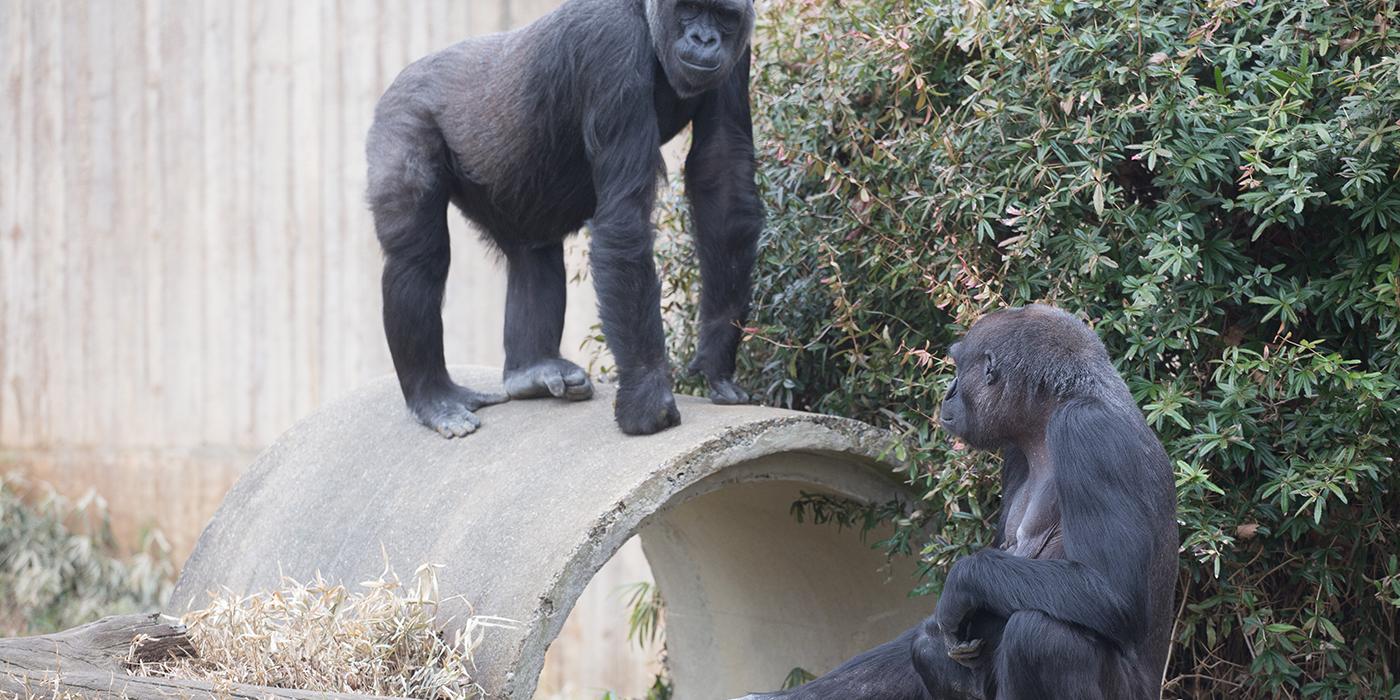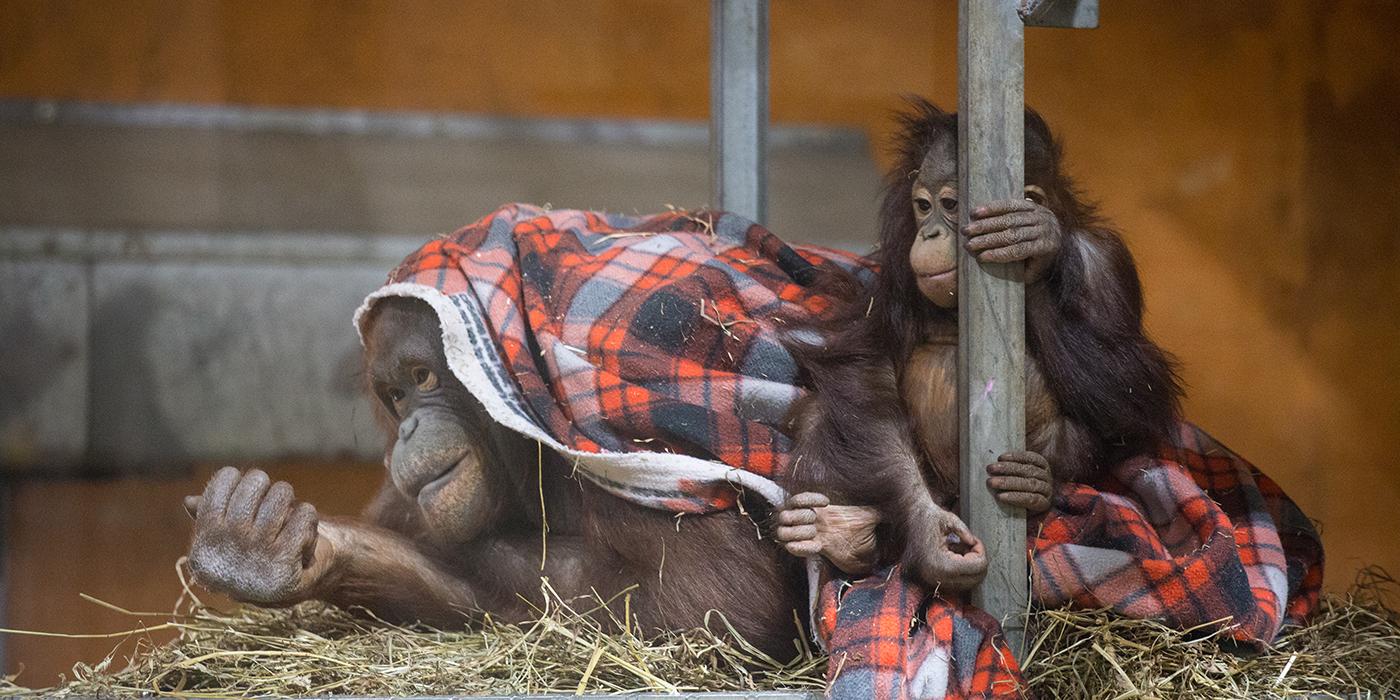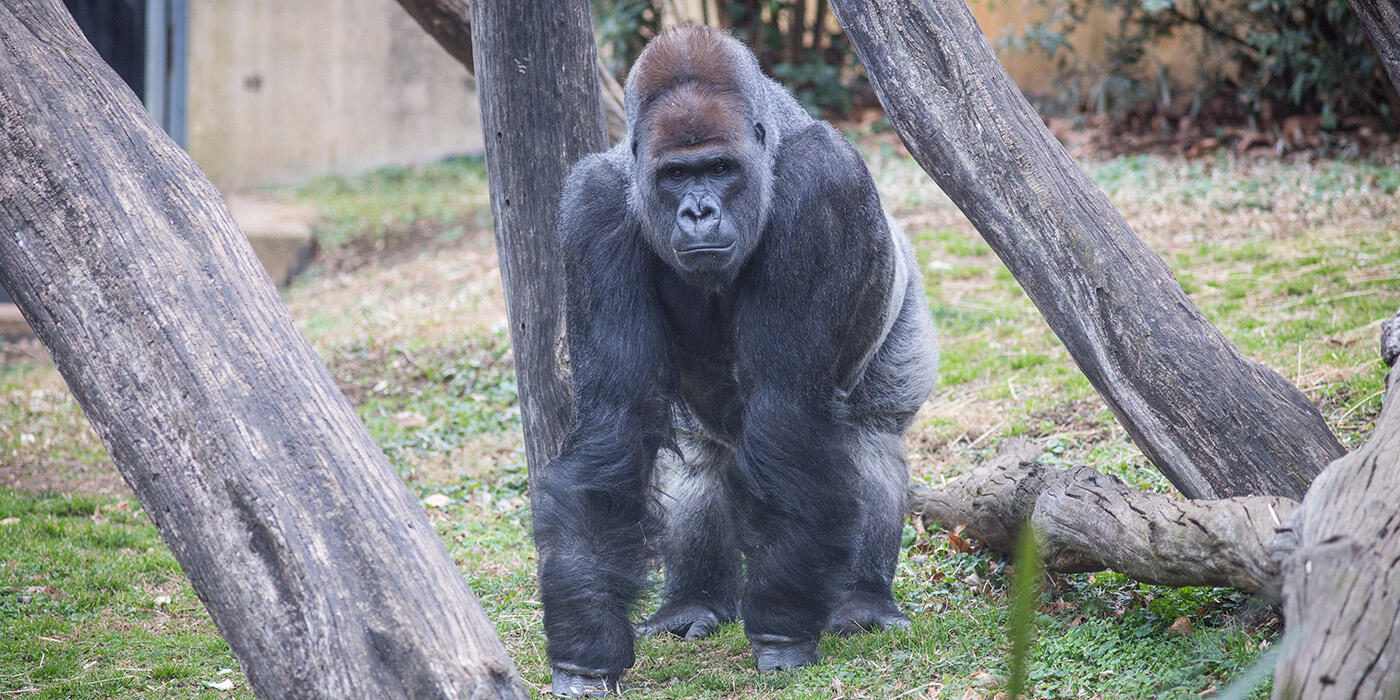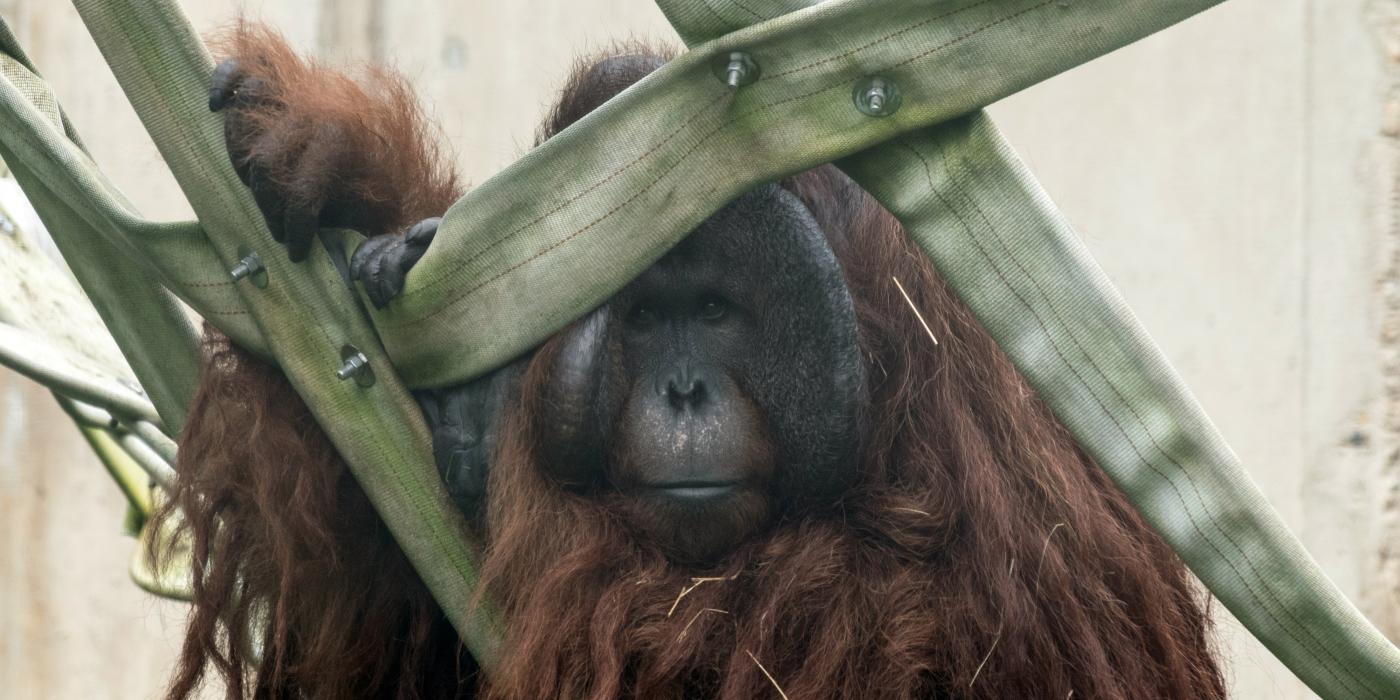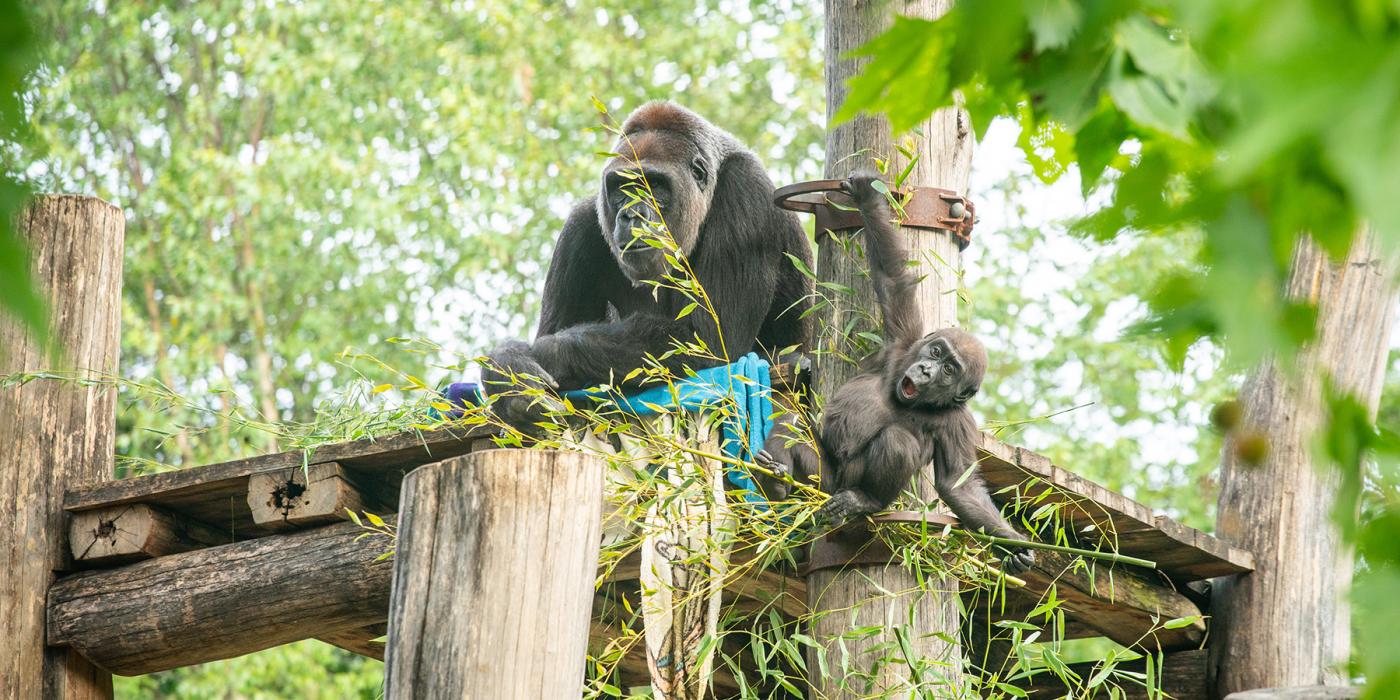#GorillaStory: Foster Training with Mandara
Expectant animal mothers at the Smithsonian’s National Zoo often undergo maternal training to ensure that they are successful parents to their new offspring. This is especially true for first-time moms like western lowland gorilla, Calaya. In addition to training the mothers-to-be, animal keepers frequently train a “foster mom” in the event that a mother is unwilling or unable to care for her infant.
“Even with the best maternal training, the mothering instinct for first-time moms may not be as strong,” explains primate keeper Erin Stromberg. “Fortunately, we have a backup plan. If the birth mother exhibits less than complete care for her infant, an experienced mother can potentially serve as a foster parent, providing the infant with the proper behavioral and social environment he or she needs to thrive. Keepers’ involvement would be limited to bottle feedings and doing visual assessments on the baby to ensure it is healthy.”
In September 2016, the primate team welcomed a Bornean orangutan infant named Redd to first-time mother Batang. Stromberg and fellow primate keeper Melba Brown spoke about maternal training for Batang and Calaya, and how animal care staff adapt training to fit their animals’ unique needs.
“Though Calaya and Batang are both great apes and first-time moms, there are a lot of differences in our approach to maternal training with each of them,” says Stromberg. “One key difference is that gorillas are a social species that lives in a group, while orangutans are highly social but are often solitary. Orangutans don’t necessarily rely on the support and shared knowledge of a group in the same way that gorillas do.”
Both Brown and Stromberg explained that, following Redd’s birth, Batang was given her own space to care for and bond with her baby. Because Calaya is accustomed to living within a troop of gorillas, keepers do not plan to separate her and her infant from the other troop members after birth.
“Separating Calaya from the troop could have a negative impact on both her and the other members of the troop,” Brown notes.
“We anticipate that Calaya will look for support from the other members of the group, particularly from our other adult female, Mandara,” adds Stromberg.
Another reason keepers plan to keep Calaya with the troop after giving birth is in the event that a foster mom needs to become involved. During Batang’s pregnancy, keepers trained orangutans Bonnie and Iris as foster mothers. Because Calaya lives in a social troop with Mandara, an experienced mother, keepers have adapted their approach.
“If the need arises, Mandara would be a foster mother to Calaya’s infant,” says Stromberg. “However, our training with Mandara has been more limited than when we trained Bonnie and Iris as foster mothers for Batang. Mandara has had six infants, the most recent of which was nine years ago. She has proven that she knows how to be an excellent mother. We are confident that if Calaya is not caring for her infant properly, Mandara will step in.”
Because Mandara and Calaya live in the same troop, keepers are cautious to prevent any confusion about who should be caring for the infant.
“Most of the work we have done with the plush toy gorilla baby has been with Calaya,” says Brown. “We want to strengthen the concept that the baby is hers and she should be the one who cares for it, rather than Mandara.”
Brown and Stromberg note that they have confidence in Calaya’s natural instincts and are optimistic that she will prove to be an excellent mother.
“Another key difference between Calaya and Batang is that Calaya has observed her own mother raising her younger sibling, so the knowledge is already there,” says Brown. “In Batang’s case, she had not seen an infant being raised by her mother. That greatly influenced the type of training we did to prepare her for motherhood.”
“It’s really about being in tune with your animals,” Stromberg adds. “We want to best prepare them for success based on their individual needs. That is true with all forms of training, but is especially true when preparing for the arrival of an infant.”
This story appears in the March 2018 issue of National Zoo News. Follow the Zoo’s updates throughout Calaya’s pregnancy on Facebook, Twitter and Instagram with the hashtag #gorillastory.
